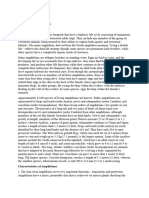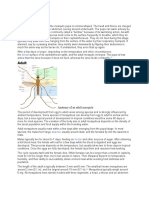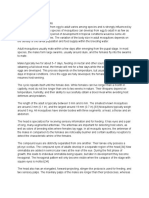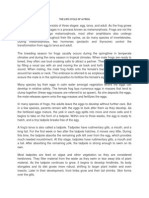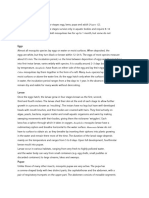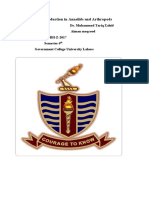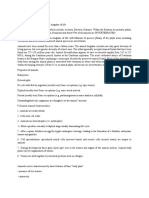Rhopalocera (Butterfly)
Functions
They are grouped together in the suborder Rhopalocera. Butterflies are closely related to moths, from which they evolved. The life of butterflies is closely connected to flowering plants, which their larvae (caterpillars) feed on, and their adults feed and lay their eggs on.
Reproduction and Development
While the larval butterfly was built for eating, the adult is built for mating. Butterflies reproduce the way other animals do sperm from a male fertilizes eggs from a female. Most provide a spermatophore, a package of sperm and nutrients the female needs to produce and lay eggs. All butterflies have "complete metamorphosis." To grow into an adult they go through 4 stages: egg, larva, pupa and adult. Each stage has a different goal - for instance, caterpillars need to eat a lot, and adults need to reproduce.
Transportation and Circulation of Nutrients
In a butterfly, there is no transportation of oxygen
in the blood. Butterflies have valves called spiracles along either side of their
bodies. Some of these spiracles, located mostly along the abdomen, allow oxygen to enter. Other spiracles exhale carbon dioxide. In this way oxygen will enter the body directly. Once inside, there is a network of tunnels similar to the network of veins in the human body. Oxygen will travel directly to where it is needed and pass into the tissue
There are no veins, arteries, or capillaries in the circulatory system. The blood is restricted only by the limits of the insect's body cavity, the hemocoel, in which lie the various organs of the body. The tissues are thus bathed in blood rather than supplied by a system of vessels. Therefore, a caterpillar will bleed to death if it is punctured. The blood is pumped around the body by the heart, a long, many chambered tube which lies along the back.

Immune System
Feedback Mechanisms
Monarchs may also use a magnetic compass, because they possess two crypto chromes that have the molecular capability for light-dependent magneto reception. Multiple genomic approaches are being utilized to ultimately identify navigation genes. Monarch butterflies are thus emerging as an excellent model organism to study the molecular and neural basis of long-distance migration. .
Caimaninae (Caiman)
Functions
Crocodilian Biology Database - Locomotion (swimming) General Biology / Moving around: Crocodiles need to move around in order to survive. FUNCTION: Moving the crocodile around in water, for a variety of reasons (e.g. hunting, thermoregulation, social interactions, relocation).
Reproduction and Development
Mating typically occurs in the wet season from April to august, depending on local climatic conditions. Males can breed with multiple females can breed with multiple males. Courtship behavior involves prospective mates swimming together, rubbing backs, bellowing, touching snouts, circling each other, and bubble-blowing. Both sexes use these behaviors to attract their mates. After female mates with a male she will build a nest i
n the mates’ territory. There, the
male and female will guard the nest, eggs, young, once they are hatched.
Some weeks after courtship and copulation, with internal fertilization, females lay their oval, hard-shelled eggs in a newly made mound of leaf litter and other vegetation. Once the eggs are laid, the female will cover the nest. Females, and sometimes males, guard their eggs against nest predators. Temperature influences sex determination during incubation. An average nest temperature of 30 degrees C will produce mostly females and 34 degrees will produce mostly males. After an incubation period of 65 to 104 days the babies will hatch out of their eggs and move to the nearest water, with some help from their parents. Once the juveniles have hatched, they will stay near their parents for about 1.5 years. Juveniles then grow to adult size at around 1.2 to 1.4 meters in length. Once juveniles reach minimum adult size, they are able to reproduce. If they survive long enough, they can continue to grow until reaching a size that may exceed 2.4 meters.
Transportation and Circulation of Nutrients
Arteries carry cells that transport oxygen and all other necessary nutrients to the heart and every other organ in the body. ... The heart's primary function is to pump blood throughout the body, so that the body's tissues can receive oxygen and nutrients and have waste substances taken away.
Regulation of Body Fluids
In freshwate
r the caiman gains water at the rate of 3.5 ml/kg hr or 1.1 μl/cm
2
hr. Of this 70% is the result of uptake through the skin, the rest being due to drinking. This gain in water is excreted by the kidneys as hypotonic urine. Urine sodium losses are reduced by active sodium uptake from the urine during storage for 3 to 4 hours in the cloaca.
In vitro
and
in vivo
experiments indicate that the skin is somewhat permeable to sodium, which moves along concentration gradients. In air the caiman loses water by evapor
ation (1.2 μl/cm
2
hr). About 75% of this takes place from the skin.
In 3.3% NaCl solution caiman’s show elevated serum sodium concentrations and 20% of them die within
24 hours. The sodium accumulation is mostly due to drinking (4.4% of the body weight/day), and only to
a minor extent to osmotic water loss through the skin (2.5% of the body weight/day or 0.6 μl/cm
2
hr). The permeability of the caiman is compared to that of fishes, Amphibian and other reptiles
.
Immune System
The immune function of crocodilians is understudied but is of interest for medical, ecological and evolutionary purposes. Crocodiles share a common ancestor with birds, comprising the arch saurian lineage, so they are an important link in our understanding of immune system evolution. As top tropic carnivores, they inhabit temperate and tropical climates in their semi-aquatic environment. However, they are also ectodermic, whereby environmental temperatures affect their physiological processes, including immune function, adding to the complexity of research in this area. Anecdotal observations and recent research have augmented enthusiasm in the realm of crocodilian immunology. Despite comprising both adaptive and innate systems, most research has investigated the innate system, which comprises peptides, proteins and leucocytes functioning in defence.
Feedback Mechanisms
Crocodilians together with birds are the modern representative of archosaurs, a group that also includes the extinct dinosaurs and pterosaurs. In both crocodilians and birds, sound signaling is important during parents-young interactions. The use of acoustic communication in the context of parental care is thus likely to be a shared behavioral feature by all archosaurs, including those of the past.







